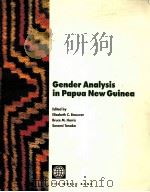《introduction to operations research seventh edition P1214》
| 作者 | 编者 |
|---|---|
| 出版 | 未查询到或未知 |
| 参考页数 | |
| 出版时间 | 没有确切时间的资料 目录预览 |
| ISBN号 | 无 — 求助条款 |
| PDF编号 | 820576338(仅供预览,未存储实际文件) |
| 求助格式 | 扫描PDF(若分多册发行,每次仅能受理1册) |

CHAPTER 1Introduction1
1.1 The Origins of Operations Research1
1.2 The Nature of Operations Research2
1.3 The Impact of Operations Research3
1.4 Algorithms and OR Courseware5
Problems6
CHAPTER 2Overview of the Operations Research Modeling Approach7
2.1 Defining the Problem and Gathering Data7
2.2 Formulating a Mathematical Model10
2.3 Deriving Solutions from the Model14
2.4 Testing the Model16
2.5 Preparing to Apply the Model18
2.6 Implementation20
2.7 Conclusions21
Selected References22
Problems22
CHAPTER 3Introduction to Linear Programming24
3.1 Prototype Example25
3.2 The Linear Programming Model31
3.3 Assumptions of Linear Programming36
3.4 Additional Examples44
3.5 Some Case Studies61
3.6 Displaying and Solving Linear Programming Models on a Spreadsheet67
3.7 Formulating Very Large Linear Programming Models73
3.8 Conclusions79
Appendix 3.1 The LINGO Modeling Language79
Selected References89
Learning Aids for This Chapter in Your OR Courseware90
Problems90
Case 3.1 Auto Assembly103
Case 3.2 Cutting Cafeteria Costs104
Case 3.3 Staffing a Call Center106
CHAPTER 4Solving Linear Programming Problems:The Simplex Method109
4.1 The Essence of the Simplex Method109
4.2 Setting Up the Simplex Method114
4.3 The Algebra of the Simplex Method118
4.4 The Simplex Method in Tabular Form123
4.5 Tie Breaking in the Simplex Method128
4.6 Adapting to Other Model Forms132
4.7 Postoptimality Analysis152
4.8 Computer Implementation160
4.9 The Interior-Point Approach to Solving Linear Programming Problems163
4.10 Conclusions168
Appendix 4.1 An Introduction to Using LINDO169
Selected References171
Learning Aids for This Chapter in Your OR Courseware172
Problems172
Case 4.1 Fabrics and Fall Fashions182
Case 4.2 New Frontiers185
Case 4.3 Assigning Students to Schools188
CHAPTER 5The Theory of the Simplex Method190
5.1 Foundations of the Simplex Method190
5.2 The Revised Simplex Method202
5.3 A Fundamental Insight212
5.4 Conclusions220
Selected References220
Learning Aids for This Chapter in Your OR Courseware221
Problems221
CHAPTER 6Duality Theory and Sensitivity Analysis230
6.1 The Essence of Duality Theory231
6.2 Economic Interpretation of Duality239
6.3 Primal-Dual Relationships242
6.4 Adapting to Other Primal Forms247
6.5 The Role of Duality Theory in Sensitivity Analysis252
6.6 The Essence of Sensitivity Analysis254
6.7 Applying Sensitivity Analysis262
6.8 Conclusions284
Selected References284
Learning Aids for This Chapter in Your OR Courseware285
Problems285
Case 6.1 Controlling Air Pollution302
Case 6.2 Farm Management304
Case 6.3 Assigning Students to Schools(Revisited)307
CHAPTER 7Other Algorithms for Linear Programming309
7.1 The Dual Simplex Method309
7.2 Parametric Linear Programming312
7.3 The Upper Bound Technique317
7.4 An Interior-Point Algorithm320
7.5 Linear Goal Programming and Its Solution Procedures332
7.6 Conclusions339
Selected References340
Learning Aids for This Chapter in Your OR Courseware340
Problems341
Case 7.1 A Cure for Cuba347
CHAPTER 8The Transportation and Assignment Problems350
8.1 The Transportation Problem351
8.2 A Streamlined Simplex Method for the Transportation Problem365
8.3 The Assignment Problem381
8.4 Conclusions391
Selected References391
Learning Aids for This Chapter in Your OR Courseware392
Problems392
Case 8.1 Shipping Wood to Market401
Case 8.2 Project Pickings402
CHAPTER 9Network Optimization Models405
9.1 Prototype Example406
9.2 The Terminology of Networks407
9.3 The Shortest-Path Problem411
9.4 The Minimum Spanning Tree Problem415
9.5 The Maximum Flow Problem420
9.6 The Minimum Cost Flow Problem429
9.7 The Network Simplex Method438
9.8 Conclusions448
Selected References449
Learning Aids for This Chapter in Your OR Courseware449
Problems450
Case 9.1 Aiding Allies458
Case 9.2 Money in Motion464
CHAPTER 10Project Management with PERT/CPM468
10.1 A Prototype Example—The Reliable Construction Co.Project469
10.2 Using a Network to Visually Display a Project470
10.3 Scheduling a Project with PERT/CPM475
10.4 Dealing with Uncertain Activity Durations485
10.5 Considering Time-Cost Trade-Offs492
10.6 Scheduling and Controlling Project Costs502
10.7 An Evaluation of PERT/CPM508
10.8 Conclusions512
Selected References513
Learning Aids for This Chapter in Your OR Courseware514
Problems514
Case 10.1 Steps to Success524
Case 10.2 “School’s out forever!!”527
CHAPTER 11Dynamic Programming533
11.1 A Prototype Example for Dynamic Programming533
11.2 Characteristics of Dynamic Programming Problems538
11.3 Deterministic Dynamic Programming541
11.4 Probabilistic Dynamic Programming562
11.5 Conclusions568
Selected References568
Learning Aids for This Chapter in Your OR Courseware568
Problems569
CHAPTER 12Integer Programming576
12.1 Prototype Example577
12.2 Some BIP Applications580
12.3 Innovative Uses of Binary Variables in Model Formulation585
12.4 Some Formulation Examples591
12.5 Some Perspectives on Solving Integer Programming Problems600
12.6 The Branch-and-Bound Technique and Its Application to Binary Integer Programming604
12.7 A Branch-and-Bound Algorithm for Mixed Integer Programming616
12.8 Other Developments in Solving BIP Problems622
12.9 Conclusions630
Selected References631
Learning Aids for This Chapter in Your OR Courseware631
Problems632
Case 12.1Capacity Concerns642
Case 12.2 Assigning Art645
Case 12.3 Stocking Sets649
Case 12.4 Assigning Students to Schools(Revisited Again)653
CHAPTER 13Nonlinear Programming654
13.1 Sample Applications655
13.2 Graphical Illustration of Nonlinear Programming Problems659
13.3 Types of Nonlinear Programming Problems664
13.4 One-Variable Unconstrained Optimization670
13.5 Multivariable Unconstrained Optimization673
13.6 The Karush-Kuhn-Tucker (KKT) Conditions for Constrained Optimization679
13.7 Quadratic Programming683
13.8 Separable Programming690
13.9 Convex Programming697
13.10 Nonconvex Programming702
13.11 Conclusions706
Selected References706
Learning Aids for This Chapter in Your OR Courseware707
Problems708
Case 13.1 Savvy Stock Selection720
CHAPTER 14Game Theory726
14.1 The Formulation of Two-Person,Zero-Sum Games726
14.2 Solving Simple Games—A Prototype Example728
14.3 Games with Mixed Strategies733
14.4 Graphical Solution Procedure735
14.5 Solving by Linear Programming738
14.6 Extensions741
14.7 Conclusions742
Selected References743
Learning Aids for This Chapter in Your OR Courseware743
Problems743
CHAPTER 15Decision Analysis749
15.1 A Prototype Example750
15.2 Decision Making without Experimentation751
15.3 Decision Making with Experimentation758
15.4 Decision Trees764
15.5 Utility Theory770
15.6 The Practical Application of Decision Analysis778
15.7 Conclusions781
Selected References781
Learning Aids for This Chapter in Your OR Courseware782
Problems782
Case 15.1 Brainy Business795
Case 15.2 Smart Steering Support798
CHAPTER 16Markov Chains802
16.1 Stochastic Processes802
16.2 Markov Chains803
16.3 Chapman-Kolmogorov Equations808
16.4 Classification of States of a Markov Chain810
16.5 Long-Run Properties of Markov Chains812
16.6 First Passage Times818
16.7 Absorbing States820
16.8 Continuous Time Markov Chains822
Selected References827
Learning Aids for This Chapter in Your OR Courseware828
Problems828
CHAPTER 17Queueing Theory834
17.1 Prototype Example835
17.2 Basic Structure of Queueing Models835
17.3 Examples of Real Queueing Systems840
17.4 The Role of the Exponential Distribution841
17.5 The Birth-and-Death Process848
17.6 Queueing Models Based on the Birth-and-Death Process852
17.7 Queueing Models Involving Nonexponential Distributions871
17.8 Priority-Discipline Queueing Models879
17.9 Queueing Networks885
17.10 Conclusions889
Selected References890
Learning Aids for This Chapter in Your OR Courseware890
Problems891
Case 17.1 Reducing In-Process Inventory905
CHAPTER 18The Application of Queueing Theory907
18.1 Examples907
18.2 Decision Making909
18.3 Formulation of Waiting-Cost Functions912
18.4 Decision Models917
18.5 Some Award-Winning Applications of Queueing Theory923
18.6 Conclusions926
Selected References926
Learning Aids for This Chapter in Your OR Courseware926
Problems927
Case 18.1 Queueing Quandary932
CHAPTER 19Inventory Theory935
19.1 Examples936
19.2 Components of Inventory Models938
19.3 Deterministic Continuous-Review Models941
19.4 A Deterministic Periodic-Review Model951
19.5 A Stochastic Continuous-Review Model956
19.6 A Stochastic Single-Period Model for Perishable Products961
19.7 Stochastic Periodic-Review Models975
19.8 Larger Inventory Systems in Practice983
19.9 Conclusions987
Selected References987
Learning Aids for This Chapter in Your OR Courseware987
Problems988
Case 19.1 Brushing Up on Inventory Control1000
Case 19.2 TNT:Tackling Newsboy’s Teachings1002
Case 19.3 Jettisoning Surplus Stock1004
CHAPTER 20Forecasting1009
20.1 Some Applications of Forecasting1010
20.2 Judgmental Forecasting Methods1013
20.3 Time Series1014
20.4 Forecasting Methods for a Constant-Level Model1016
20.5 Incorporating Seasonal Effects into Forecasting Methods1018
20.6 An Exponential Smoothing Method for a Linear Trend Model1021
20.7 Forecasting Errors1025
20.8 Box-Jenkins Method1026
20.9 Causal Forecasting with Linear Regression1028
20.10 Forecasting in Practice1036
20.11 Conclusions1038
Selected References1038
Learning Aids for This Chapter in Your OR Courseware1038
Problems1039
Case 20.1 Finagling the Forecasts1048
CHAPTER 21Markov Decision Processes1053
21.1 A Prototype Example1053
21.2 A Model for Markov Decision Processes1056
21.3 Linear Programming and Optimal Policies1059
21.4 Policy Improvement Algorithm for Finding Optimal Policies1064
21.5 Discounted Cost Criterion1069
Selected References1077
Learning Aids for This Chapter in Your OR Courseware1078
Problems1078
CHAPTER 22Simulation1084
22.1 The Essence of Simulation1084
22.2 Some Common Types of Applications of Simulation1097
22.3 Generation of Random Numbers1101
22.4 Generation of Random Observations from a Probability Distribution1105
22.5 Outline of a Major Simulation Study1110
22.6 Performing Simulations on Spreadsheets1115
22.7 Variance-Reducing Techniques1126
22.8 Regenerative Method of Statistical Analysis1131
22.9 Conclusions1138
Selected References1140
Learning Aids for This Chapter in Your OR Courseware1140
Problems1141
Case 22.1 Planning Planers1151
Case 22.2 Pricing under Pressure1153
APPENDIXES1156
1.Documentation for the OR Courseware1156
2.Convexity1159
3.Classical Optimization Methods1165
4.Matrices and Matrix Operations1169
5.Tables1174
PARTIAL ANSWERS TO SELECTED PROBLEMS1176
INDEXES1195
Author Index1195
Subject Index1199
《introduction to operations research seventh edition P1214》由于是年代较久的资料都绝版了,几乎不可能购买到实物。如果大家为了学习确实需要,可向博主求助其电子版PDF文件。对合法合规的求助,我会当即受理并将下载地址发送给你。
高度相关资料
-

- INTRODUCTION TO PROBABILITY AND STATISTICS SEVENTH EDITION
- 1987 DUXBURY PRESS
-

- AN INTRODUCTION TO POETRY SEVENTH EDITION
- HARPER COLLINS PUBLISHERS
-

- GENDER ANALYSIS IN PAPUA NEW GUINEA
- 1998 THE WORLD BANK
-

- Operations Research An Introduction Fourth Edition
- 1987 Macmilian publishing company
-

- Operations research: an introduction Second Edition
- 1976 Macmillan
-

- Introduction to operations research
- 1967 Holden-Day
-

- Introduction to operations research Sixth Edition
- 1999 China Machine Press
-

- INTRODUCTION TO PSYCHOLOGY:EXPLORATION AND APPLICATION SEVENTH EDITION
- 1995 WEST PUBLISHING COMPANY
-

- INTRODUCTION TO CRIMINAL JUSTICE SEVENTH EDITION
- 1996 WEST PUBLISHING COMPANY
-

- AN INTRODUCTION TO PHYSICAL SCIENCE SEVENTH EDITION
- 1993 D.C.HEATH AND COMPANY
-

- INTRODUCTION TO COMMUNICATION RESEARCH SECOND EDITION
- 1998 MCGRAW-HILL
提示:百度云已更名为百度网盘(百度盘),天翼云盘、微盘下载地址……暂未提供。➥ PDF文字可复制化或转WORD



